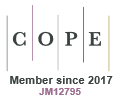Just Accepted
This article has been peer reviewed and accepted for publication. It is in production and has not been edited, so may differ from the final published form.
Phytochrome A in etiolated wild-type and albino barley seedlings: a far-red pulse induces interconversion between the two physicochemically and functionally distinct phyA types—phyA′ into phyA″
Abstract
Photoreceptor phytochrome (phy), comprising a small family of species, regulates plant development, being most active under red (R) and far-red (FR) light. One of the major phytochromes, phyA, is unique among the others: it mediates distinct photoreactions—the very low fluence responses (VLFR), the high irradiance responses (HIR), and also the low fluence responses (LFR) characteristic for phyB. This functional diversity is likely to be connected with its heterogeneity: there are two native pools, possibly differing by serine phosphorylation at the N-terminus—phyA′ mediating the VLFR and phyA″ responsible for the HIR and LFR. In this work, we went on investigating their nature by in vivo spectrofluorimetry, turning to the chlorophyll-less albino barley mutant. It was characterized both by the higher total phyA content and the proportion of phyA′ in etiolated coleoptile tips. The lack of PChlide allowed characterization of phyA pools in primary leaves (of the mutant)—the phyA′/phyA″ proportion was the same as in the coleoptiles, whereas their content was substantially lower. phyA′ in the mutant coleoptiles revealed less lability under light as compared with the wild type, suggesting that the mutation may affect the phyA's proteolytic system. A specific effect of FR light on phyA in coleoptiles was observed—a relatively fast (tens of min) conversion of phyA′ into phyA″ that may be part of the complex process of plant light adaptation.
FP25012 Accepted 07 April 2025
© CSIRO 2025



